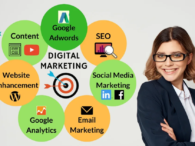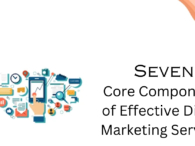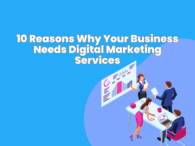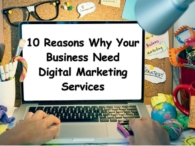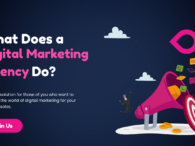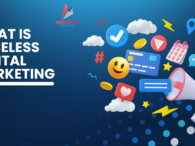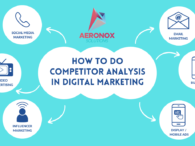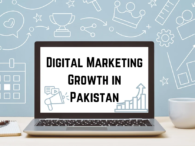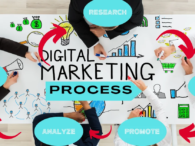Online marketing services include digital marketing services. It happens when brands use the internet and digital tools to reach possible customers. This can be
Core Components of Effective Digital Marketing Services
Components of digital marketing are explained here in the complete details. Digital marketing has become an essential aspect of business growth in today's high
10 Reasons Why Your Business Needs Digital Marketing Services
Businesses that do not adjust to the internet world run the risk of falling behind in the rapid technological age. It is impossible to oversell the significanc
10 Reasons Why Your Business Needs Digital Marketing Services
As a business owner, you may be wondering if digital marketing services are worth the investment. The short answer is yes. In today's digital age, having a st
What Does a Digital Marketing Agency Do – Detailed Guide:
Today, almost all businesses, regardless of their type, are realizing the need for a good online presence. This is where all these digital marketing agencies c
What is Faceless Digital Marketing
With the growing popularity of online marketing, the competition within the business complex is constantly increasing as each business strives to identify uniq
How To Do Competitor Analysis In Digital Marketing
In the dynamic world of digital marketing, understanding your competitors is crucial for staying ahead of the curve. Competitor analysis is a powerful tool tha
Why Choose Digital Marketing as A Career
Choosing digital marketing as a career is a smart move because it's a fast-growing field with many opportunities. It allows you to work with the latest technolo
Digital Marketing Growth in Pakistan
Digital marketing is growing quickly in Pakistan as more people use the internet and smartphones. Social media platforms like Facebook and Instagram are popular
TOP DIGITAL MARKETING CHANNELS
The Digital marketing channels offer diverse pathways to connect with audiences and drive business growth. It starts with enhancing visibility through SEO and e
Digital Marketing Process
Digital marketing uses online platforms and tools to promote products or services to targeted audiences. It includes SEO, social media, email campaigns, and con
The Importance of a Website in Digital Marketing: A Comprehensive Guide
In the digital age, a websites is not just a digital business card—it's the importance of a website in digital marketing strategy. For businesses of all sizes,
Social Media Marketing
Monthly Social Media Marketing & Management Plans Boost your online presence with Aeronox Solutions' monthly social media marketing and management packages
E-mail & Whatsapp Marketing
Email Marketing Plans Aeronox Solutions offers flexible email marketing packages designed to engage your audience and drive results. Our packages include ta
Telemarketing
Basic Telemarketing Package $80 Daily One Agent $10 / per hour Order Now>> This includes: 8 Hours of
Services
Smartest techniques in the business. Our service Brilliant innovation for your business. Experience unparalleled growth with Aeronox Solutions – w
